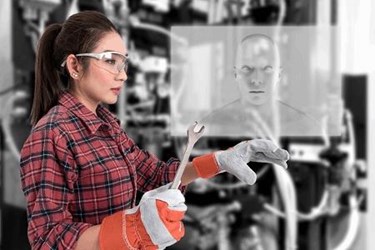Will Digital Transformation Through Augmented Reality Lead To A Zero-Sum Game For Field Service Organizations?

By Michael Blumberg, President, Blumberg Advisory Group

Augmented Reality (AR) and Virtual Reality (VR) are one of the hottest technologies hitting the field service industry today. This technology provides field service organizations with the ability to remotely solve customer problems through a collaborative video platform that superimposes a computer-generated image (e.g., annotation, technical instruction) onto a user's view of the real world, thus providing a composite view.
Digital transformation (DX) is a trend that is having the greatest influence on the adoption of AR/VR platforms. Rather than utilizing technology to simply to streamline and automate existing business processes and transactions, DX is about utilizing technological innovation such AR/VR to change the very way business is conducted, resulting in new business models and cultures.
DX has had a very positive impact on the performance of companies who that have pursued this strategy. In fact, in some instances it has resulted in a winner-take-all scenario. According to Constellation Research Founder and Principal Analyst Ray Wang, "digital leaders in almost every industry are taking 40 percent to 70 percent of the overall market share and 23 percent to 57 percent of profits. In some markets [sic], if there are one or two major players, they are taking up to 77 percent of the profits.”
These findings suggest that DX could lead to a "zero-sum" game for selected field service providers. Therefore, it should come as no surprise that businesses across a wide range of industry segments are investing heavily in DX technologies. Indeed, worldwide spending on DX is estimated to approach $1.2 Trillion by 2017 year-end, according to International Data Corporation, an increase of 17.8 percent over 2016. IDC predicts this market will continue to grow at a steady rate of 17.9 percent over the next three years, reaching $2.0 Billion by 2020.
Changing The Way Field Service Is Conducted
At a macro level, AR technology changes the way field service business is conducted. Basically, it the problem to the expert rather than the other way around. As a result, it shortens the time it takes to resolve a customer’s issue and avoids the excessive costs associated with sending a technician to the customer site. In addition, it helps FSOs overcome resource constraints. For example, utilizing this technology, a technician at a customer site can simultaneously offer remote support to a second customer at another location. Furthermore, the technology facilitates greater collaboration and performance among technicians. A "top-gun" technician with deep domain knowledge and expertise can provide remote guidance to a less experienced engineer. Technicians can also use annotations as part of AR sessions to overcome language barriers that may exist between people in different regions. Lastly, AR/VR provides an immersive experience to the customer, which enhances their experience and enables them to be self-reliant when it comes to resolving basic issues.
In many ways, AR/VR pushes the boundaries of possibilities when it comes to providing high quality and efficient services and support to end customers. By overcoming limitations, FSOs experience improved performance in the areas of first time fix, remote call resolution rates, mean time to repair, and cost per service call. While effective field service leaders have always been committed to continuously improving performance in these areas, AR/VR provides the technology to make step-wise (e.g., exponential) improvements as opposed to only small incremental gains. AR/VR brings additional value in its ability to positively influence and enhance customer satisfaction as well as generate new and profitable sources of revenue for FSOs. For example, many early FSO adopters have been able to monetize their investment in this technology by offering AR/VR-enabled remote support sessions as a value-added, fee-based service offering to customers. The case is clear that FSOs should consider deploying an AR/VR solution today.
